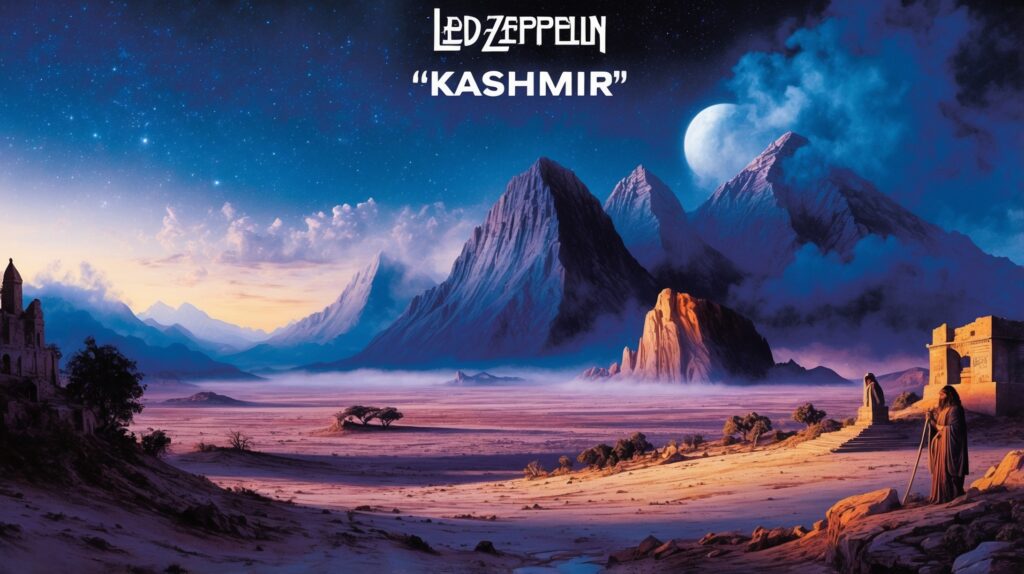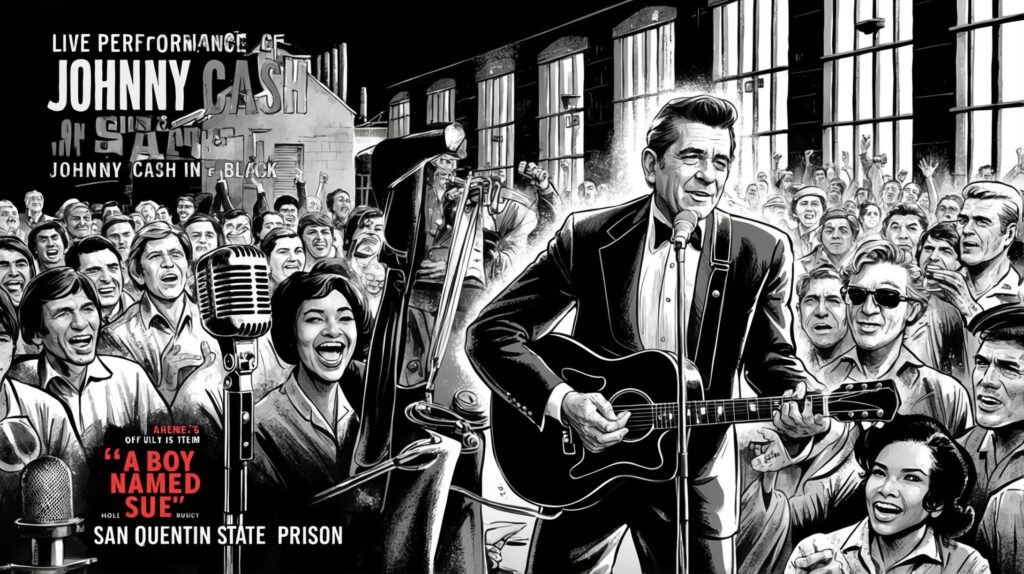Fool to Cry: The Rolling Stones Showcase Emotional Vulnerability
When discussing The Rolling Stones, one can’t help but admire their longevity and immense influence on the rock music genre. Formed in London in 1962, the band consists of core members Mick Jagger, Keith Richards, Charlie Watts, and Ronnie Wood. Though the lineup has seen some changes over the years, with the late Brian Jones and Bill Wyman being notable past members, the essence of The Rolling Stones remains intact. With numerous awards to their name, including three Grammy Awards and an induction into the Rock and Roll Hall of Fame in 1989, their impact on the music industry is indisputable.
It’s important to highlight “Fool to Cry” as a significant moment in the band’s career. Released as a single in 1976 from their album “Black and Blue,” the song is a departure from The Rolling Stones’ usual rock sound. Instead, it delves into a slower, more soulful style that showcases their versatility as musicians. The song’s introspective lyrics, penned by Jagger and Richards, deal with themes of love, heartbreak, and vulnerability.
Mick Jagger’s falsetto performance in “Fool to Cry” is noteworthy, as it adds a layer of emotional depth to the track. Keith Richards and Ronnie Wood’s harmonizing guitar work, along with Charlie Watts’ subtle drumming, contribute to the song’s understated, yet powerful atmosphere. While some fans and critics may argue that the band is at its best when delivering high-energy rock tunes, “Fool to Cry” proves that The Rolling Stones are not afraid to explore different musical styles and reveal a more tender side to their songwriting.
Despite the song’s commercial success, reaching number 6 on the UK Singles Chart and number 10 on the US Billboard Hot 100, it remains one of the lesser-known tracks in The Rolling Stones’ extensive discography. While it may not stand out as much as some of their more iconic hits such as “Satisfaction” or “Sympathy for the Devil,” “Fool to Cry” is a testament to the band’s ability to step outside their comfort zone and deliver a genuinely heartfelt performance.
In conclusion, “Fool to Cry” is an underrated gem in The Rolling Stones’ catalog that highlights their musical adaptability and willingness to experiment with new styles. Although it might not be everyone’s cup of tea, the song’s emotional resonance and introspective lyrics showcase a different side to a band that has been making headlines for nearly six decades.
Awards, Accolades, and Appearances Galore
“Fool to Cry” may not have hit the same heights as some of the other Rolling Stones classics, but it has definitely earned its share of accolades over the years. Released as a single in 1976, the song reached the top 10 on the charts in multiple countries, including the UK and the US. It was even nominated for a Grammy in the category of Best Performance by a Rock Duo or Group with Vocal.
One of “Fool to Cry”‘s most notable appearances in popular culture came in the 2007 film “The Darjeeling Limited,” directed by Wes Anderson. The song’s melancholic and introspective atmosphere provided a perfect backdrop for the movie’s emotional story. In addition, the track has been used in various TV shows, such as the hit drama series “This Is Us” and the popular comedy “The Venture Bros,” showcasing its versatility as a soundtrack choice.
Over the years, several artists have paid tribute to the Rolling Stones by covering “Fool to Cry.” Some of the most notable examples include versions by Tegan and Sara, who bring their signature indie-pop flair to the track, and the British soul singer Lewis Taylor, whose rendition appeared on his 2006 album “The Lost Album.” Another interesting cover comes from the Brazilian rock band Cachorro Grande, who put their unique spin on the song with a Portuguese version titled “Bobo de Chorar.”
While it may not be one of their most famous tracks, “Fool to Cry” has certainly left its mark on the music world and popular culture. From its chart success in the ’70s to its continued presence in film and television, this Rolling Stones’ classic continues to resonate with fans, both old and new, and inspire artists to put their own spin on the iconic song.
Charting the Success of “Fool to Cry”
“Fool to Cry” was released as the lead single from The Rolling Stones’ album “Black and Blue” on April 16, 1976. The song, featuring Mick Jagger’s falsetto, was a departure from their previous rock and roll sound, leaning more towards an R&B style.
Upon its release, “Fool to Cry” quickly gained traction and climbed the charts. In the United States, the song entered the Billboard Hot 100 chart at the 73rd position on May 15, 1976. It eventually peaked at the 10th spot on June 26, 1976, making it a top 10 hit for The Rolling Stones. The song also fared well on the Cash Box Top 100 chart, where it reached the 9th position.
Across the pond in the United Kingdom, “Fool to Cry” made its debut on the UK Singles Chart at the 30th position on May 1, 1976. Within a few weeks, the song climbed to its peak position of number 6 on May 22, 1976, showcasing the band’s continued success in their home country.
In addition to its success in the US and UK, “Fool to Cry” also charted in several other countries. It reached the top 10 in Canada, peaking at number 8 on the RPM Top Singles chart. In Ireland, the song climbed to the 11th position, while in Australia and New Zealand, it peaked at numbers 21 and 16, respectively.
While “Fool to Cry” might not have reached the chart-topping heights of some of The Rolling Stones’ other hits, its success both in the United States and internationally is a testament to the band’s versatility and ability to evolve with the times. The song’s unique sound and chart performance make it a notable entry in the extensive discography of the legendary rock outfit.
A Deep Dive into the Musical Structure of “Fool to Cry”
One of the most captivating elements of the Rolling Stones’ “Fool to Cry” is its distinctive musical structure. Written in the key of D major, the song showcases a unique blend of chords, tempo, and rhythmic patterns that contribute to its enduring appeal. Let’s break down the various components of this classic track.
To begin with, “Fool to Cry” features a consistent tempo of approximately 66 beats per minute (BPM), which lends the song a smooth and laid-back feel. The time signature is the standard 4/4, giving ample space for the melodic and harmonic elements to breathe and interact.
The song’s chord progression is intriguing, as it follows a rather unconventional pattern. The verses are primarily built around the chords Dmaj7, Bm7, Em7, and A7, while the pre-chorus introduces a modulation to E major, with a progression of C#m7, F#m7, B7, and E. This change in tonality adds an unexpected twist to the song’s structure, providing a perfect segue into the chorus.
In the chorus, the chords return to the key of D major, with a progression of Gmaj7, A7, and Dmaj7. This section employs a technique known as “secondary dominant,” with the A7 chord functioning as the dominant (V) of the Dmaj7 chord. This creates a sense of resolution and satisfaction in the listener, as the harmony returns to the home key from the temporary modulation in the pre-chorus.
Rhythmically, “Fool to Cry” is driven by a syncopated piano and guitar pattern that adds a layer of complexity to the otherwise straightforward 4/4 time signature. The drums, on the other hand, maintain a steady, relaxed groove throughout the track, providing a solid foundation for the rest of the instrumentation.
Another notable aspect of the song is Mick Jagger’s emotive vocal delivery, which is supported by the lush backing vocals that accentuate the melody. The lead vocal line follows a memorable and catchy melody that complements the harmonic progression and the overall mood of the track.
In conclusion, the unique musical structure of “Fool to Cry” sets it apart in the Rolling Stones’ discography. The combination of unusual chord progressions, a relaxed tempo, and intricate rhythmic patterns contribute to the song’s timeless appeal and status as a classic in the history of popular music.
A Visual Ode to “Fool to Cry”
Despite not having an official music video, “Fool to Cry” by The Rolling Stones has garnered quite a following among fans, who have taken it upon themselves to create visual tributes for this classic track. Since its release in 1976, the song has remained a favorite among Stones enthusiasts, and its emotional resonance continues to inspire various interpretations by the band’s devoted fanbase.
One such example can be found on the YouTube channel “StonesNoFilter,” where a user created a montage of black-and-white images from the band’s early days, showcasing their journey through the years. The nostalgic approach captures the introspective theme of the song, emphasizing the emotional depth of Mick Jagger’s lyrics and delivery.
Another tribute comes from a talented animator named “TommyToonz.” In the video, the artist depicts the band as animated characters, performing “Fool to Cry” in a dark and moody setting. With its creative visuals and subtle storytelling, this version adds a touch of whimsy to the song, while maintaining its emotional core.
However, one fan-made video that stands out is by YouTube user “DandyCannibal,” who combined footage from The Rolling Stones’ concert performances and off-stage moments with the audio track of “Fool to Cry.” The result is a poignant and heartfelt tribute that feels like an intimate sneak peek into the life of the legendary band. The video has since gained thousands of views and is widely regarded as the unofficial music video for the song.
Although no official music video was ever produced for “Fool to Cry,” it’s clear that the song holds a special place in the hearts of The Rolling Stones’ fans. These creative fan-made videos serve as a testament to the song’s lasting impact, ensuring that its legacy lives on through the captivating visuals and enduring passion of the band’s admirers.
Peeling Back the Layers of “Fool to Cry”
The Rolling Stones have a long, storied history of producing thought-provoking and captivating lyrics. Their 1976 hit “Fool to Cry” is no exception, as it delves into deep emotional territory. Let’s take a closer look at the lyrics and their meaning, as well as the context and events of the time that may have contributed to this poignant tune.
When I come home baby
And I’ve been working all night long
I put my daughter on my knee, and she says
“Daddy, what’s wrong?”
She whispers in my ear so sweet
“You know what she says?
“Daddy, you’re a fool to cry
You’re a fool to cry
And it makes me wonder why
Daddy, you’re a fool to cry”
I’m a fool, baby
I’m a certified fool, baby
I want to tell you
Got to whip smart
Up and face it
Fool to cry
I just can’t waste it
That’s what she said
“You’re a fool to cry”
I said, “Yeah”
“You’re a fool to cry”
And I said, “Yeah”
“Fool to Cry” was released during a time of great change and upheaval, particularly in the realms of music, politics, and social issues. The Rolling Stones were always adept at capturing the essence of their era, and this song is no exception. The tender lyrics in “Fool to Cry” seem to be a reflection of the vulnerability and uncertainty many people felt during this time.
The lyrics tell a story of a man who comes home after a long day, weighed down by the burdens of life. However, it’s his daughter’s innocent and loving words that put things into perspective for him. She tells him that he’s a “fool to cry,” emphasizing the importance of resilience and strength in the face of adversity. This heartfelt message resonates with the challenges faced by many during the mid-70s, as they navigated shifting social norms and a rapidly changing world.
While the lyrics themselves offer a touching narrative, it’s also worth noting that the song provides a glimpse into the life of The Rolling Stones’ lead singer Mick Jagger, who was a new father at the time. This adds a layer of authenticity and emotion to the song, as it becomes apparent that Jagger is drawing from personal experience.
In summary, “Fool to Cry” is a beautiful and deeply emotional song that captures the zeitgeist of the mid-70s, as well as the personal growth of its creators. It serves as a reminder of the power of love and resilience in times of challenge and change.
The Mastermind Behind “Fool to Cry”
When it comes to the composer of “Fool to Cry,” none other than the legendary Mick Jagger takes the spotlight. As the lead vocalist of The Rolling Stones, Jagger has been the creative force behind countless classic tunes. A gifted songwriter, he often collaborates with fellow Stone Keith Richards, forming one of the most iconic and enduring songwriting partnerships in music history. Some of their most notable compositions include “Gimme Shelter,” “Sympathy for the Devil,” and “(I Can’t Get No) Satisfaction.” With a career spanning over six decades, Mick Jagger has cemented his position as an integral part of not just The Rolling Stones, but the larger tapestry of rock ‘n’ roll as well.
?Did you know? “Fool to Cry” was the 1st song Mick Jagger solely produced for The Rolling Stones!? Embrace your inner fool & dance away those tears! #RollingStones #FoolToCry #ClassicRock #MickJaggerMagic
Click to Tweet







